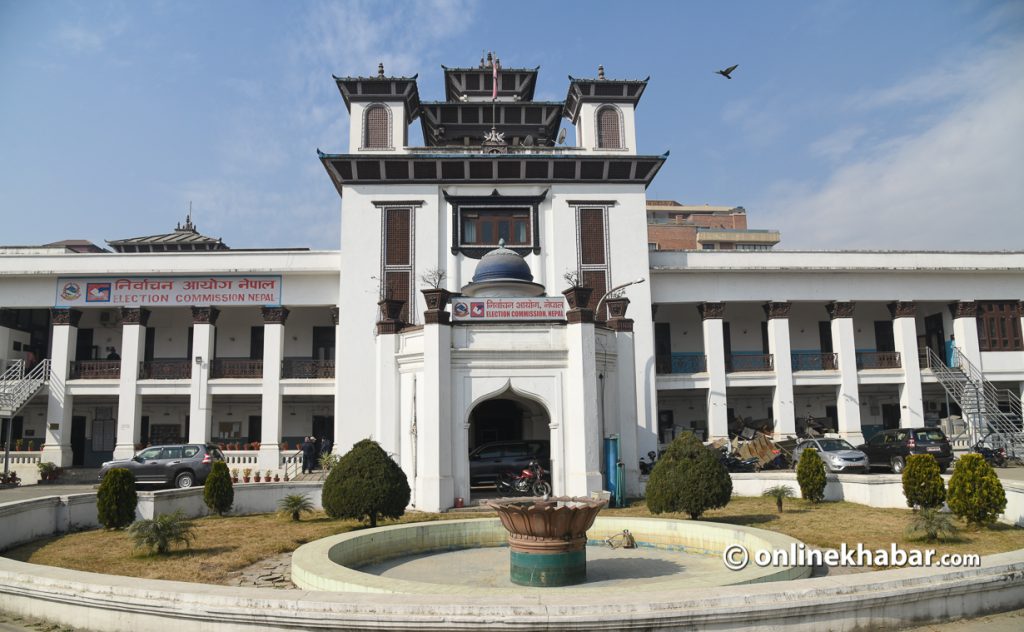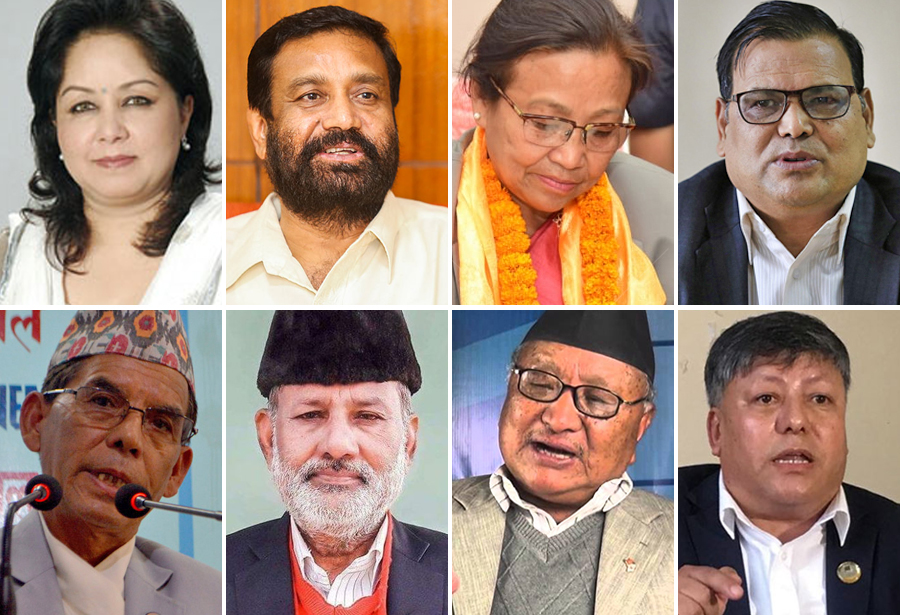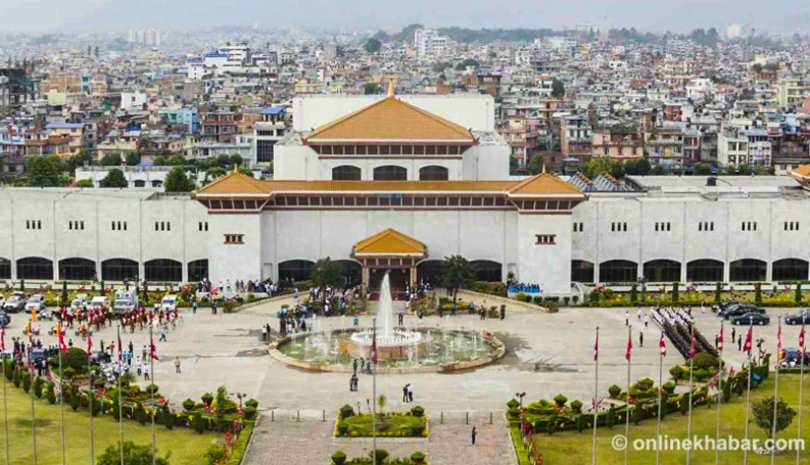Proportional representation parliamentary seats, meant for the marginalised, are being captured by the powerful in Nepal

While the country was celebrating Constitution Day earlier this week, political parties submitted their closed list of the proportional representation candidates for the November elections of the House of Representatives and provincial assemblies to the Election Commission Nepal.
The goal behind the implementation of the proportional representation electoral system was to reduce the long-standing inequality based on regions, communities, genders, classes, etc, and to guarantee inclusive representation in the legislature. But, looking at the list, it can be said that the parties have prioritised the leaders who already have political access to resources.
In other words, the parties that competed to express commitment to implement the constitution ironically did the opposite and prepared a non-inclusive list. Hence, serious questions have once again been raised about the commitment and honesty of the parties towards the constitution.
“The political leadership should have thought about the spirit and intention of the proportional representation electoral system. But, if they just want to exploit the loopholes and serve those who are members of parliaments and ministers in the proportional representation quota, we can just follow one system (first-past-the-post or proportional),” comments Bipin Adhikari, a senior constitutional expert and policy analyst.
Adhikari adds that the leaders of major parties that have contested direct elections and keep losing are misusing the proportional representation system.
Capture by the powerful

The CPN-Maoist Centre, which claims to have proportional inclusion as its agenda, has prioritised Krishna Bahadur Mahara who already has won multiple elections and enjoys parliamentary and political benefits. He won elections from Rolpa-2 in 1991, Dang-3 in 2007, Rolpa-1 in 2013 and Dang-2 in 2017.
The party championed Mahara even though he had to resign as the speaker after facing allegations of sexual violence. Mahara is also currently the vice-chairperson of the Maoist Centre.
He says. “I fought directly five times and won, so I asked them to put me in the proportional representation system this time.”
Nepali Congress shares the same case. From Gopal Man Shrestha, who has been the acting chief (of the Nepali Congress Democratic party) to Bimalendra Nidhi, who has claimed the leadership of the party, are also giving their candidacy under the proportional representation system. Nidhi, who carries the family legacy of Congress founder Mahendra Narayan Nidhi, won the 2008 elections from Dhanusha.
Congress joint general secretaries Jeevan Pariyar and Farmullah Mansur are also on the proportional representation candidacy list. Both are leaders in national politics.
What more? They have also kept Arzu Rana Deuba, who might be the successor of the party leadership, on the list. Deuba, who contested in the 2017 election from Kailali-5, was still recommended from the same constituency.
Another strong example of that is Prem Bahadur Singh. Singh, who entered the UML last March by sharing the same platform together with actress Karishma Manandhar, is also on the list. Singh had already formed a separate party and became MP and won elections under the proportional representation system in 2007 and 2013.
Nainkala Thapa is another name on the UML’s list. On June 10 last year, UML Chairman KP Sharma Oli appointed Thapa as the minister for communications (though only for two weeks) whereas she is the wife of UML Vice-Chairman Ram Bahadur Thapa.
CPN-Unified Socialist has also placed its leaders, who have a stronghold, on the proportional representation candidate list. Vice-chairman Pramesh Hamal, deputy general secretary Gangalal Tuladhar and secretary Nagendra Chaudhary are on the list. All these three are leaders who have good influence within the party and even in national politics.
The infamous trend

This trend of listing political leaders, who can and have won direct elections, in the proportional representation candidate list started with Girija Prasad Koirala. In the 2007 elections, the then Prime Minister and Nepali Congress President Koirala sat at the top of the list. Given Koirala’s age or seniority and previous roles (interim prime minister and head of state), no one from the party opposed it either.
Meanwhile, protests broke out because the parties started including rich people with controversial backgrounds on the proportional representation candidate list. But, the parties did not make any corrections and the trend continued.
Parties have assigned ministerial and advisory responsibilities to rich and influential leaders who came with the benefit of the proportional representation electoral system.
Constitutional expert Bipin Adhikari says the system adopted by the parties now does not allow the participation of marginalised communities, castes, genders and regions, going against the purpose of the system altogether.
A suitable example of this is the current Home Minister Bal Krishna Khand. Khand has been a central member of Congress since 1996 and a strong contender for the leadership of the party. But, he too used the quota to get into the parliament in 2017.
The trend also shows that those without political background or merit have become ministers through the proportional representation system.
Moti Lal Dugar, who held the position of special economic advisor to Prime Minister KP Sharma Oli, became an MP from the proportional representation in the 2017 elections. Not only did Oli make him the MP from the Madheshi cluster but he also appointed him as the state minister for industry.
Earlier, in 2007, the UML also made billionaire Binod Chaudhary a member of parliament under the proportional representation system. It was the same case with Lharkyal Lama. Lama even became the state minister for finance when Jhala Nath Khanal was the prime minister. But, Chaudhary and Lama did not stay long in the UML.
Although the leaders speak in favour of the trend of appointing people from the business background, the perception of it has always been negative. It is a popular thought that they have “bought their way to party and parliament”.
This trend is still in order in the current government. Prime Minister Deuba drew heavy criticism when he appointed Umesh Shrestha, a member of parliament under the proportional representation system, as the state minister for health in July last year.
This story was translated from the original Nepali version and edited for clarity and length.
The post Proportional representation parliamentary seats, meant for the marginalised, are being captured by the powerful in Nepal appeared first on OnlineKhabar English News.
Comments
Post a Comment